Did you know that despite their small size, tiny homes can still offer a sense of spaciousness and luxury? The Tiny Home Movement has gained popularity as a solution to rising property prices and a desire for a simpler, more sustainable lifestyle. In this article, we will explore ways to make your tiny home feel larger than life.
Key Takeaways
- Giant tiny houses provide a spacious and comfortable living experience.
- Embracing minimalism in your tiny home can lead to financial advantages and reduced environmental footprint.
- Creating open spaces by decluttering and finding smart storage solutions is essential.
- Selecting light and airy colors, materials, and design elements can make your tiny home appear bigger.
- Maximizing space through strategic layout and functional furniture is crucial in expanding your tiny home.
Embracing Minimalism: Living with Less
The Tiny Home Movement is driven by the desire to live with less and reduce lifestyle stresses. With minimalist living at its core, this movement promotes a philosophy of simplicity and deliberate choices. People are choosing tiny homes for various reasons, including the financial advantages they offer. Compared to traditional homes, tiny homes are more affordable, allowing individuals to reduce their financial burdens and live within their means.
But it’s not just the financial advantages that attract people to the tiny home philosophy. Living in a smaller space also brings about a reduced environmental footprint. Tiny homes typically require fewer materials and consume less energy, making them a greener housing option. By intentionally downsizing, individuals can minimize their impact on the environment and take steps towards a more sustainable future.
Moreover, embracing a minimalist lifestyle can help individuals find freedom from the stresses that often come with a more consumer-driven, materialistic existence. In a tiny home, residents are encouraged to examine their values, prioritize the essentials, and let go of unnecessary possessions. This freedom from excessive materialism and the constant urge to acquire more allows residents to focus on what truly matters to them.
Living in a tiny home also provides the opportunity for a more self-sufficient life. With limited space, individuals are challenged to be creative and resourceful, finding innovative ways to meet their needs. From utilizing vertical space for storage to employing sustainable systems for water and energy, tiny homeowners can take control of their consumption and reduce their reliance on external resources.
Reducing Clutter and Simplifying Life
Minimalist living in a tiny home begins with decluttering and simplifying one’s belongings. When space is limited, it is crucial to let go of items that are no longer serving a purpose and find storage solutions that maximize the available space. By embracing a minimalist mindset, homeowners can create open and airy living areas that promote a sense of calm and tranquility.
To further enhance the sense of space, incorporating light and neutral colors in the interior design can make a tiny home feel larger and more inviting. Natural light is also a vital element in creating an open ambiance, so maximizing windows and incorporating mirrors can help to reflect light and create the illusion of a larger space.
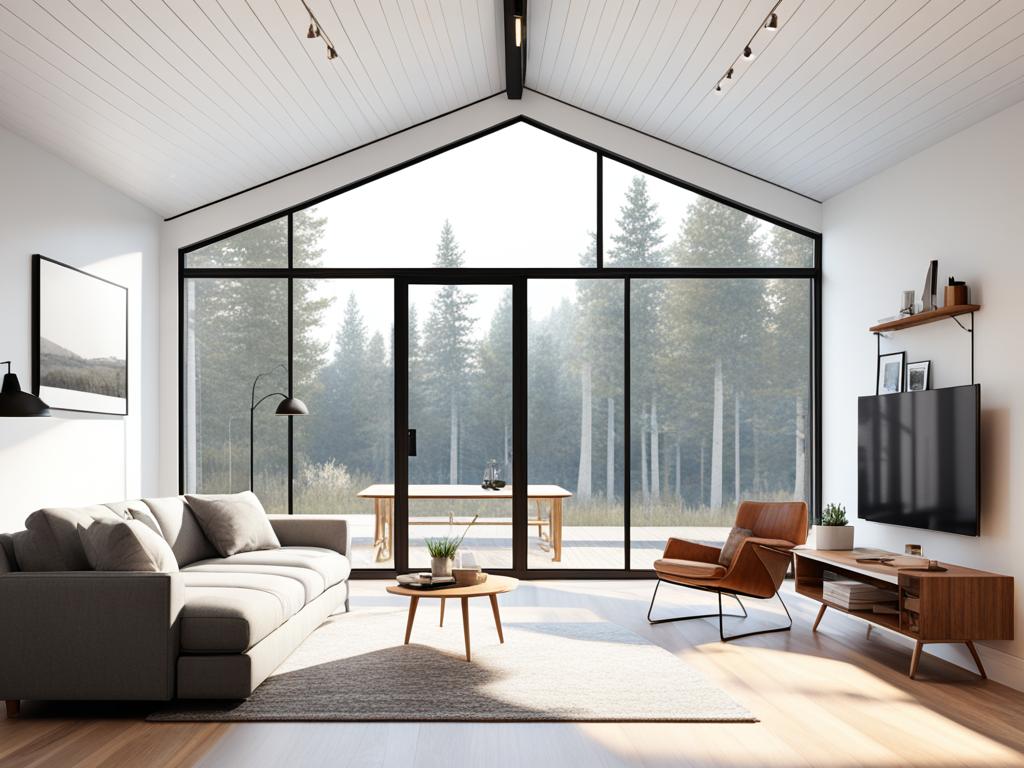
Next, we’ll explore how playing with colors and materials can contribute to light and airy vibes in a tiny home.
Declutter and Simplify: Creating Open Spaces
One of the first steps to making your tiny home feel bigger is to declutter and get rid of unnecessary items. A clutter-free environment not only creates a sense of open space but also enhances the functionality and aesthetics of your home. Consider selling or donating belongings that you don’t need. This allows you to streamline your possessions and create a more open and orderly home.
When decluttering, it’s important to assess each item and determine if it serves a purpose or brings you joy. If not, it’s time to let it go. By parting with items that no longer serve you, you create room for the things that truly matter.
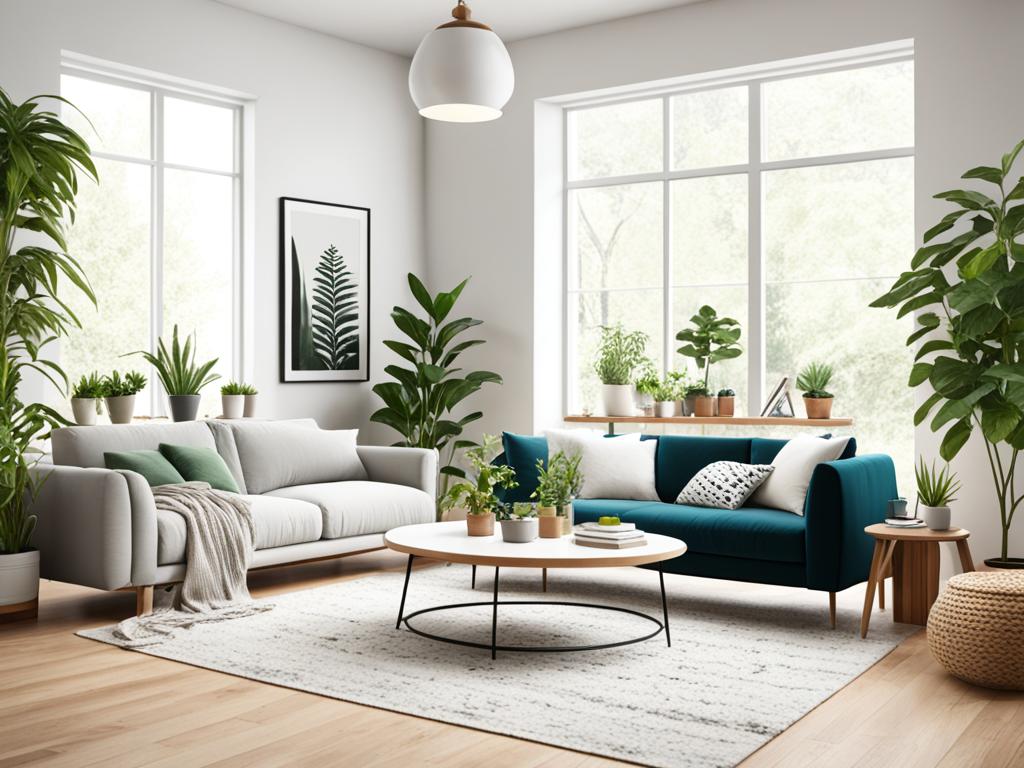
Sell or Donate Items
If you have items that are in good condition but no longer useful to you, consider selling them. Online marketplaces, such as eBay or Gumtree, provide a convenient platform to reach potential buyers. Not only does selling items help you declutter, but it can also generate some extra cash.
Alternatively, donating items to local charities or shelters is a great way to give back to the community while decluttering your home. Thrift stores and donation centers accept a wide range of items, from clothing to household goods, making it easy for you to find a new home for your unwanted belongings.
Storage Solutions
Maximizing storage is crucial in a tiny home. Look for creative storage solutions that make the most of your available space. Utilize vertical storage options, such as wall shelves or hanging organizers, to free up valuable floor space. Consider incorporating multifunctional furniture with built-in storage compartments, like ottomans or beds with drawers.
Customize your storage solutions to fit your specific needs. Think about utilizing space under stairs, in unused corners, or even installing overhead storage racks. By taking advantage of every nook and cranny, you can keep your home organized and clutter-free.
In conclusion, decluttering and finding suitable storage solutions are essential steps in creating an open and orderly home. By letting go of unnecessary items and embracing clever storage ideas, you can make the most of your tiny space and achieve a sense of freedom and tranquility.
Playing with Colors and Materials: Light and Airy Vibes
When it comes to designing your tiny home, choosing the right colors and materials can significantly impact the overall ambiance and sense of space. By incorporating light and cool colors, solid-colored upholstery, dark wood flooring, vertical panelling, and smaller and custom-made items, you can create a light and airy atmosphere that maximizes the available space.
Start by selecting light and cool colors for your walls and furniture. Shades like pastel blues, soft yellows, and pale greens can make your tiny home feel open and bright. These light hues reflect natural light, giving the illusion of more space. Consider opting for solid-colored upholstery, such as cream, white, or light gray, instead of bold patterns. Solid colors create a cohesive and uncluttered look, contributing to a sense of spaciousness.
Dark wood flooring is another excellent choice for enhancing the airy vibes in your tiny home. It adds a touch of nature and warmth while offering contrast to the light colors on the walls and furniture. The dark tones ground the space and create a calming ambiance.
Incorporating vertical panelling on your walls can also make a significant difference in how spacious your tiny home feels. Vertical lines draw the eyes upwards, giving the illusion of higher ceilings. This trick makes the room appear more expansive and open, even in a compact space.
Another tip to consider is selecting smaller and custom-made items for your tiny home. By opting for furniture and decor tailored to fit your space, you can maximize every inch. Custom-made items are designed with your specific requirements in mind, ensuring that they fit perfectly and don’t take up unnecessary space.
Image:
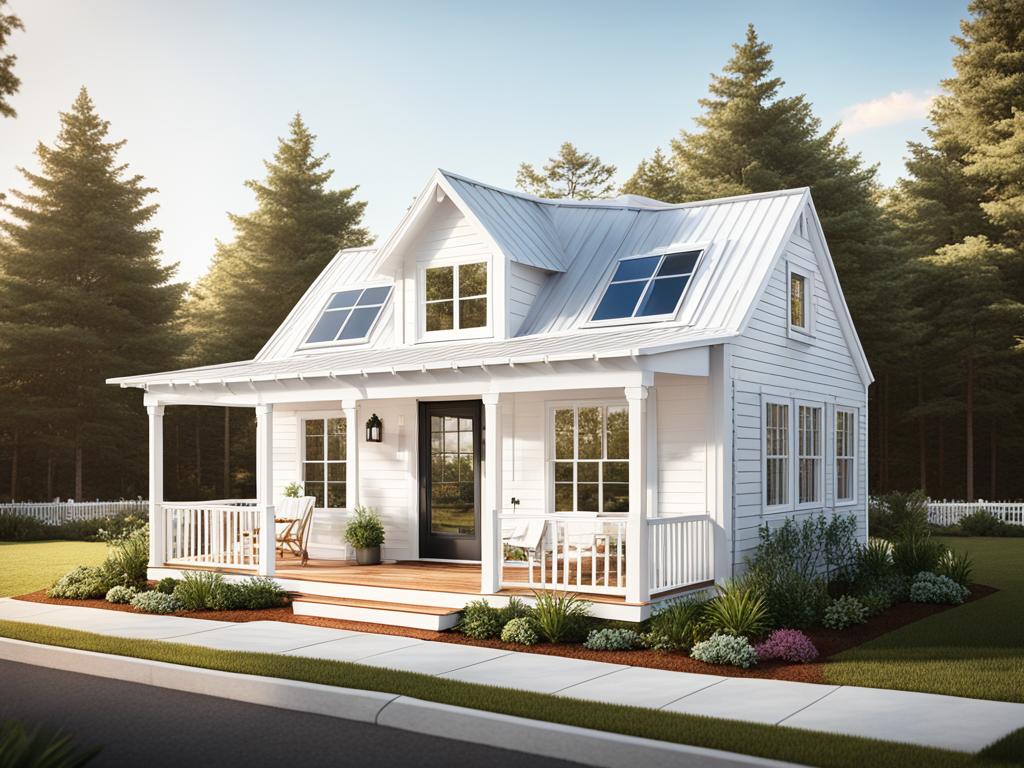
Clever Design Choices: Creating Illusions of Space
When it comes to tiny homes, clever design choices can work wonders in creating illusions of space. By incorporating certain elements, you can make your small living space feel more open and inviting. Here are some design tips to make your tiny home feel larger than it actually is.
1. Incorporate Multiple Light Sources
Using multiple light sources can brighten up your tiny home and give the illusion of a larger space. Consider installing different types of lighting, such as overhead lights, wall sconces, and floor lamps. By strategically placing these light sources around the room, you can eliminate dark corners and create a more spacious atmosphere.
2. Strategically Place Mirrors and Windows
Mirrors and windows can be your best friends when it comes to making your tiny home appear bigger. Hang mirrors on walls opposite windows to reflect natural light and give the illusion of a larger space. Additionally, including large windows in your design will bring in more natural light, making the room feel brighter and more open.
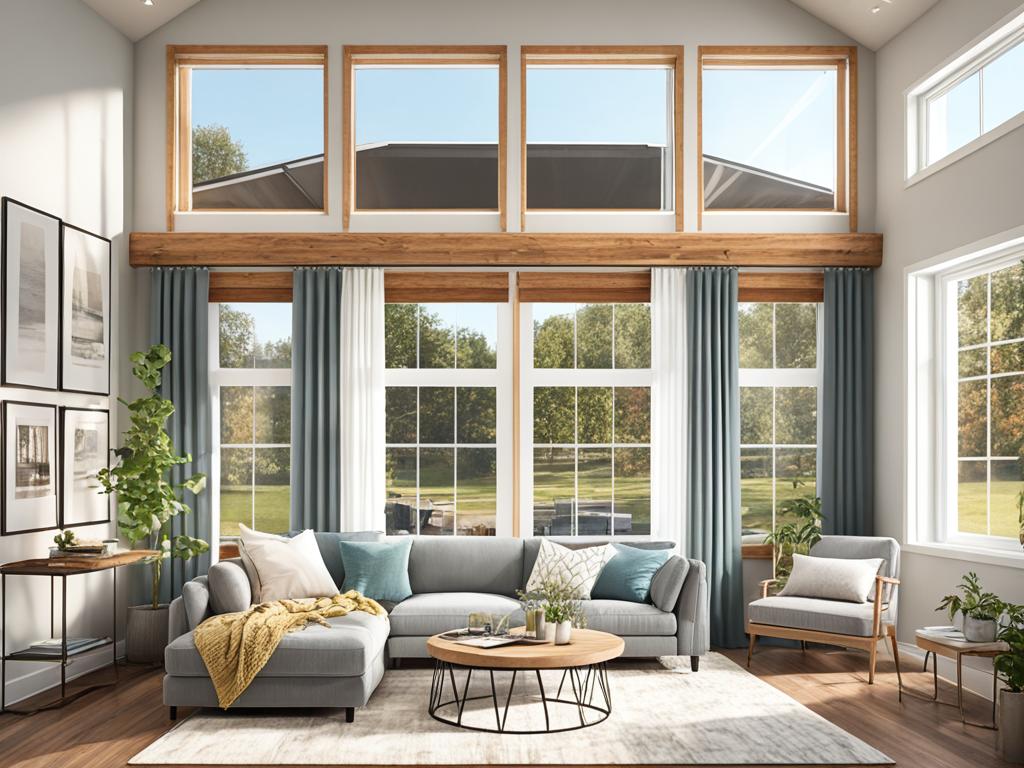
3. Embrace Minimalist Decorations
In a tiny home, less is often more. Opt for minimalist decorations that create a clean and organized look. This doesn’t mean you have to sacrifice style – choose a few statement pieces that reflect your personality, but avoid cluttering the space with too many accessories. By keeping the overall design minimalistic, you can create an open and spacious environment.
4. Use Sheer Window Treatments and Light Fabrics
Letting in natural light is crucial in making a small space feel more open. Consider using sheer window treatments that allow sunlight to filter through while providing privacy. Additionally, using light fabrics for curtains, upholstery, and bedding can contribute to a brighter and airier feel in your tiny home.
5. Stick to a Light or Neutral Palette
Choosing a light or neutral color palette for your tiny home can work wonders in creating a bright and spacious atmosphere. Lighter shades, such as whites, creams, and pastels, tend to reflect more light, making the space appear larger. Neutral tones also provide a calming backdrop, allowing the focus to be on the size and layout of the space rather than the colors on the walls.
By incorporating these clever design choices, you can transform your tiny home into a visually larger and more inviting space. Remember, it’s not about the size of your home, but rather how you make the most of the space you have.
Strategic Layout and Functional Furniture: Maximizing Space
When it comes to tiny homes, maximising space is crucial. By strategically planning the layout and choosing functional furniture, you can create a more spacious and efficient living environment.
Consider Loft Extensions
A popular solution for adding extra usable space and headroom in a tiny home is loft extensions. These elevated areas can serve as additional bedrooms, storage spaces, or cozy lounges. By utilising vertical space, you can make the most of every inch in your tiny home.
Optimise Storage with Built-In Solutions
Effective storage solutions are vital in a small living space. Customise your tiny home with built-in shelves and cabinets to maximise storage capacity and keep your essentials neatly organised. Designing storage that blends seamlessly with the overall aesthetic of your home ensures both functionality and style.
Invest in Multi-Functional Furniture
Multi-functional furniture is a game-changer when it comes to maximising space. Look for pieces that serve multiple purposes, such as a sofa that can be transformed into a bed or a coffee table with hidden storage compartments. By choosing furniture that can adapt to different needs, you can optimise your tiny home’s functionality without sacrificing style.
Create Outdoor Living Areas
Extend your living space beyond the confines of your tiny home by creating outdoor living areas. Decks or patios can provide a place to relax, entertain guests, or dine alfresco. Just a few steps outside can make a world of difference in terms of space and overall enjoyment of your tiny home.
Add a Sunroom or Enclosed Porch
To create additional space and a greater sense of openness, consider adding a sunroom or an enclosed porch. These light-filled areas can be used as a tranquil reading nook, a home office, or even a small dining area. The abundance of natural light will make your tiny home feel more spacious and inviting.
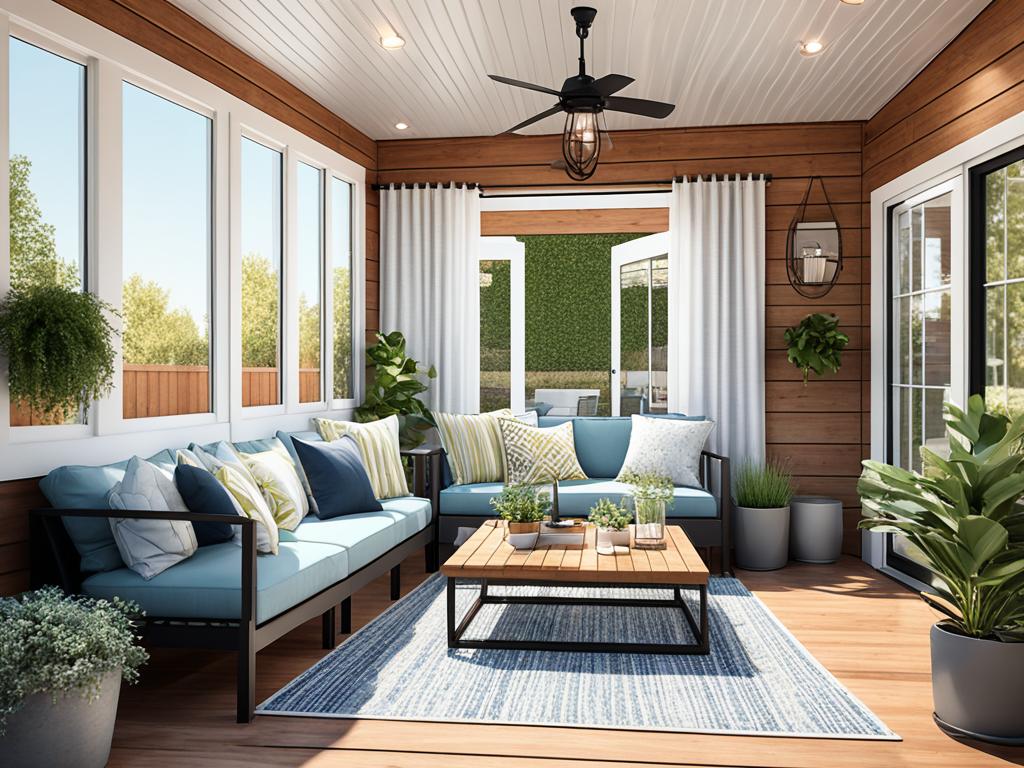
Take Advantage of Expandable Sections
Some tiny house designs feature expandable sections that can be pulled out or lifted up to create additional living space when needed. These innovative solutions allow you to have more room for entertaining guests or accommodating overnight visitors while still maintaining the compact size of your tiny home.
By strategically planning the layout, incorporating functional furniture, and creating outdoor living areas, you can maximise space in your tiny home, making it feel larger and more versatile. Embrace the possibilities and turn your tiny home into a sanctuary that meets all your needs.
Conclusion
Expanding and improving tiny homes can provide numerous benefits, including creating more usable space and improving the overall functionality of the home. By incorporating design strategies such as decluttering, playing with colours and materials, making clever design choices, and maximising space through strategic layout and functional furniture, you can make your tiny home feel larger and more comfortable.
The Tiny Home Movement allows you to simplify your life, reduce your environmental footprint, and live in a way that aligns with your values. With the increasing popularity of tiny homes, there are now more options available to customise and personalise your small space, allowing you to make the most of every square metre.
Whether you’re looking to downsize, embrace minimalism, or simply want to explore alternative living options, tiny homes offer a unique and versatile solution. By maximising small spaces and utilising efficient design principles, you can create a home that is both functional and aesthetically pleasing.


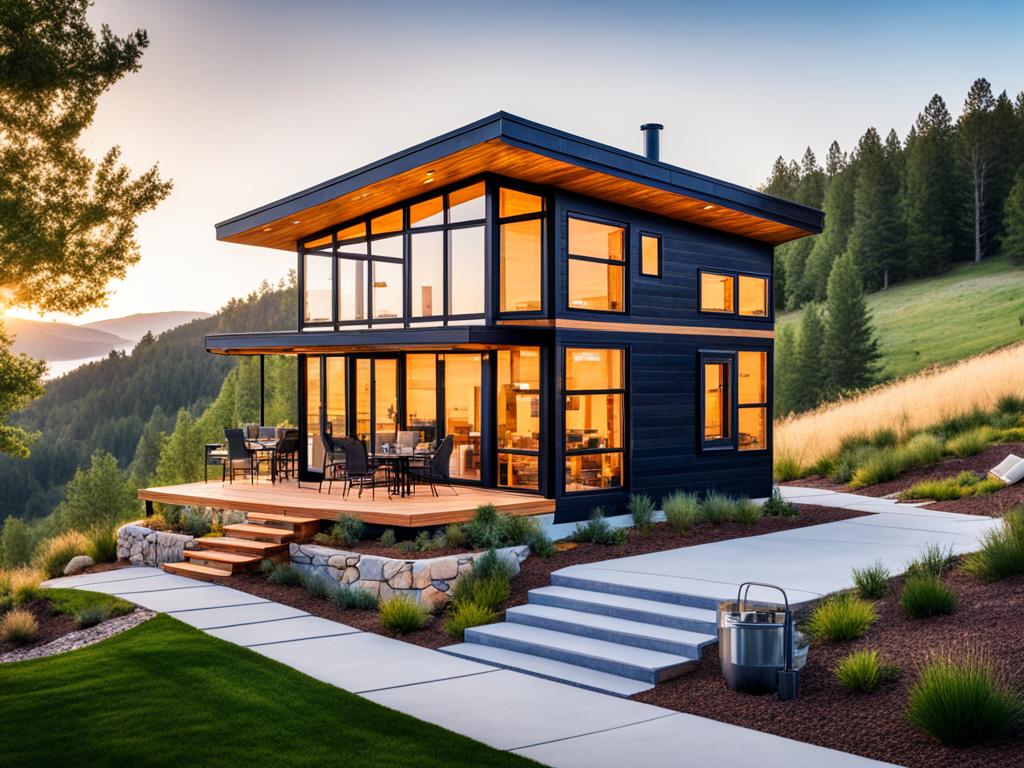



Join The Discussion